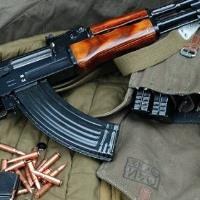
(LUXEMBOURG) – EU ministers gave the green light Tuesday to a revision of the firearms directive, which provides for more rigorous controls on the acquisition and possession of firearms.
The new directive enhances the traceability of firearms, bans the civilian use of the most dangerous semi-automatic firearms and improves information sharing between EU countries.
The revision was submitted in November 2015 against the backdrop of a series of terrorist acts that took place in Europe and which revealed gaps in implementation of the directive. It responds to the increased security concerns by trying to make sure that legitimate channels and regulatory set-ups for the acquisition and possession of firearms are not abused by criminal groups or terrorists.
The directive is an important step forward, “particularly since it balances security concerns with the need to preserve legitimate activities,” says Malta’s Minister for Home Affairs and National Security Carmelo Abela, for the EU presidency: “It is however vital for the EU and its member states to continue working towards shutting off illegal channels for the acquisition of firearms by criminal groups and terrorists.”
The revision strengthens the rules on the marking of firearms, by including a new obligation to mark also all their essential components. Harmonising the rules for the marking of firearms and establishing the mutual recognition of marks between member states will improve the traceability of firearms used in criminal activities, including those which have been assembled from components acquired separately.
This information also has to be recorded in national data-filing systems. For this to happen, member states will now have to ensure that dealers and brokers register any transaction of firearms electronically and without any undue delay.
The rules on the deactivation of firearms have been strengthened, not least through a provision requiring the classification of deactivated firearms under category C (firearms subject to declaration). Until now, deactivated firearms have not been subject to the requirements set by the directive.
The revision also includes a new category of salute and acoustic weapons, which were not covered by the original directive. These are live firearms that have been converted to blank firing ones, for example, for use in theatres or television. In the absence of more stringent national provisions, such firearms could be purchased freely. This posed a risk, given that their reconversion to live ones was often possible with limited efforts (they were for example used in the Paris terrorist attacks). The new wording of the directive ensures that these weapons remain registered under the same category as the firearm from which they have been converted.
The most dangerous firearms, classified in category A, can only be acquired and possessed on the basis of an exemption granted by the relevant member state. The rules for granting such exemptions have now been significantly strengthened. Possible grounds for exemption, such as national defence or the protection of critical infrastructure, are now set out in a limited list and exemptions may only be granted where there is no risk to public security or public order.
When a firearm of category A is required for sport-shooting, it can only be acquired according to strict rules which include proven practice recognised by an official shooting sport federation.
Article 7 para 4a provides the possibility of confirming authorisations for semi-automatic firearms (new point 6, 7 or 8 of category A) legally acquired and registered before the directive comes into force.
Some dangerous semi-automatic firearms have now been added to category A and are therefore prohibited for civilian use. This is the case for short semi-automatic firearms with loading devices over 20 rounds and long semi-automatic firearms with loading devices over 10 rounds. Similarly, long firearms that can be easily concealed, for example by means of a folding or telescopic stock, are also now prohibited.
The new rules enable the Commission to propose the establishment of a system for the exchange of information electronically between member states. The information would cover cases where the transfer of a firearm to another member state has been authorised as well as where the acquisition and possession of a firearm has been refused.
The directive sets out minimum rules and does not prevent member states from adopting and applying stricter rules.
The Council and the European Parliament now need to sign the adopted directive. The signed text will be published in the EU Official Journal and will enter into force 20 days later.


